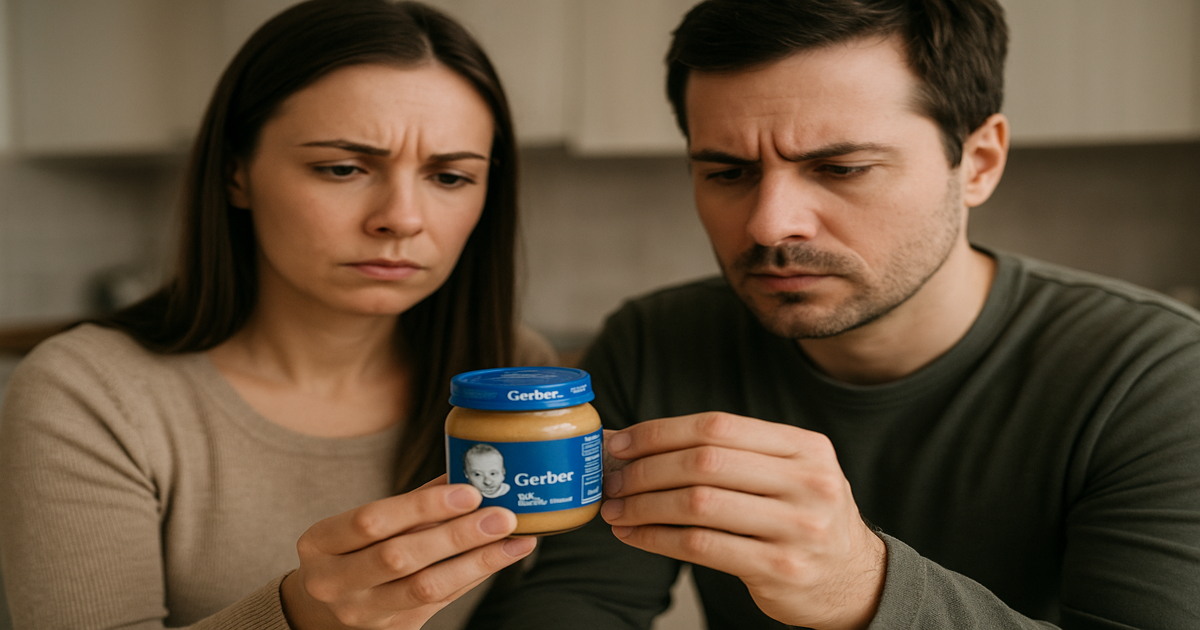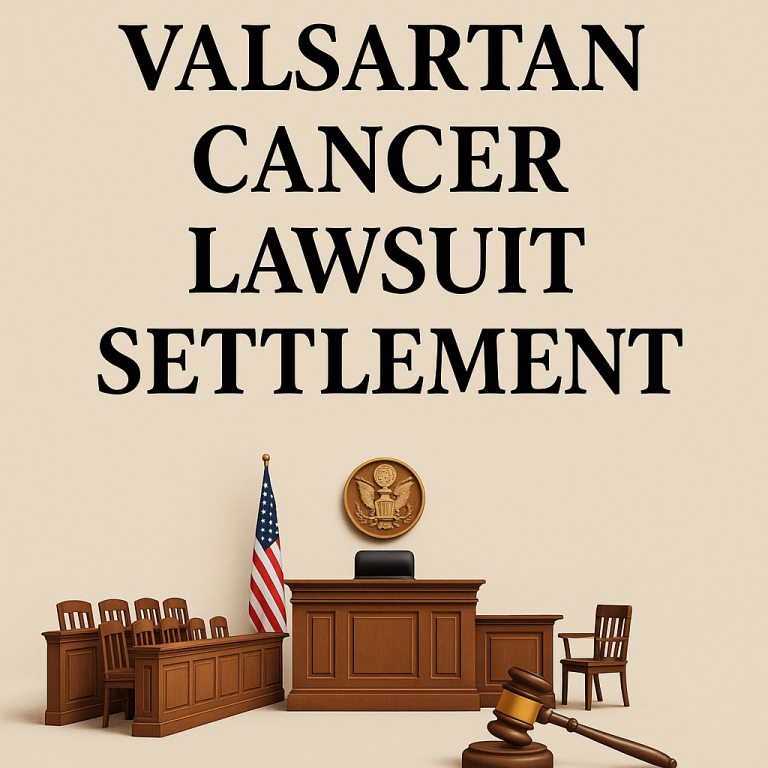The Gerber baby food lawsuits have emerged as a focal point in the burgeoning conversation about food safety and corporate accountability. For generations, Gerber has built a brand around a notion of reliability and trust, nestled itself in the lives of nearly every American family, and constructed a legacy of their own. And now there is evidence that the legacy is tarnished.
According to decades of scientific and legal evidence, Gerber baby food products likely contain toxic levels of heavy metals, including arsenic, lead, cadmium, and mercury. More specifically, legal claims assert that long-term exposure to such foods can result in developmental disorders like autism spectrum disorder (ASD) and attention-deficit/hyperactivity disorder (ADHD). The sheer number of families across the country taking their chances and becoming increasingly aware of the risks associated with toxins in baby food products is likely to continue growing.
By May 2025, hundreds of families have alleged claims against Gerber baby foods. This article offers an exhaustive review of the legal and procedural updates, pertinent science, Gerber’s response, and the regulation modes. It also includes education and reference for parents and caregivers.
Why Are Parents Suing Gerber?
Parents nationwide filed class action lawsuits claiming that Gerber knowingly sold baby food products containing unsafe and high levels of toxic heavy metals. Most of the lawsuits are a result of a report issued by the U.S. House Subcommittee on Economic and Consumer Policy in February 2021 that reviewed internal documents from the largest baby food manufacturers. The report showed that Gerber’s baby food products exceeded dangerously high levels of arsenic, lead, cadmium, and mercury, and neglected to share those details with the public.
The lawsuits allege that Gerber has the duty to test raw ingredients and finished products for contamination but did not execute the testing functions well. The plaintiffs claim Gerber either turned a blind eye, and/or concealed, test results from internal tests indicating dangerous levels of metals. By marketing these products without a meaningful warning to consumers, Gerber is alleged to have misrepresented consumers’ interests and shown preferences for profit and not children’s health and wellbeing. The lawsuits allege fraudulent misrepresentation, breach of warranty, violation of consumer protection laws, and other claims.
The parents seek compensatory damages for medical expenses, developmental therapy cost, lost wages, emotional distress, and punitive damages to punish Gerber and deter similar wrongdoing in the future.
What Toxins Were Found in Gerber Baby Foods?
Scientific analysis and internal documents have shown that the following toxic heavy metals are found in Gerber baby food products:
- Inorganic Arsenic – This is a carcinogenic metal that poses a greater threat to infants. It negatively affects brain development and can increase the risk of cancer. Inorganic arsenic is found predominantly in rice-based baby cereals. Arsenic gets into crops through contaminated water or soil.
- Lead – There is no safe lead exposure for children. The presence of lead in food and other consumables has been directly related to additional learning disabilities, developmental delays, more aggressive behavior and lower IQs. Lead can get into food from fruits washed or grown in lead contaminated soil and root vegetable and grains grown in contaminated soil.
- Cadmium – Cadmium accumulates in the kidneys and bones. Cadmium also can inhibit nutrient absorption and can cause deformities of the skeleton in young children. Cadmium is found in baby foods from phosphate fertilizers.
- Mercury – Mercury is less frequently present than lead, cadmium and inorganic arsenic, but can harm a developing nervous system. It can also affect speech and ego memory and can impair motor skills. Like cadmium, mercury originates in food ingredients from leaching by industrial waste and runoff from mining.
The toxic metals mentioned above accumulate over time in the body, and babies and toddlers are especially vulnerable to the effects of toxic metals. This is a result of the high rate of brain development in infants and toddlers compared to youth and older individuals, as well as smaller body weight.
Toxic Metals Found in Baby Foods (2021 Congressional Report)
| Metal | Health Risks | Found in Gerber? | FDA Legal Limit | Congressional Concern |
|---|---|---|---|---|
| Arsenic | Cancer, brain damage | Yes | 100 ppb (rice) | Often exceeded |
| Lead | Lower IQ, behavior issues | Yes | No set limit | Present in multiple products |
| Cadmium | Kidney damage, bone loss | Yes | No set limit | Found in cereals |
| Mercury | Cognitive and motor delays | Yes | No set limit | Occasionally present |
Link Between Heavy Metals, Autism, and ADHD
Legal filings and medical experts are making disturbing connections between the exposure to toxic metals from baby foods and developmental disorders:
Autism Spectrum Disorder (ASD) – In a 2023 meta-analysis in Environmental Research, 17 studies were reviewed and overall they could consistently find links between the prenatal or infant exposure to inorganic arsenic and lead with risk of developing autism spectrum disorders. Not only that, many of the autistic children also had observed exposure and significantly higher amounts of heavy metals found in their blood and hair analyses.
Attention-Deficit/Hyperactivity Disorder (ADHD) – A study in 2022 from the Harvard School of Public Health found that chronic low-level exposures to cadmium and lead could inhibit the neurotransmitter pathway linked to dopamine. Dopamine pathways are important in regulating attention and impulse control in children that might have ADHD.
Consensus – The U.S. Agency for Toxic Substances and Disease Registry (ATSDR) and the National Institute of Environmental Health Sciences (NIEHS) both identify heavy metals as neurotoxins and associated exposures could impair brain development in early life.
Plaintiffs argue that Gerber should have known that these levels of components of toxicity were associated with adverse health effects and that Gerber had reasonable opportunities to minimize toxic metal exposure, such as reducing ingredient sourcing, additional testing, and being transparent to consumers.
What Legal Claims Are Being Made?
Lawyers representing families affected by contaminated formula products are bringing lawsuits with an array of legal claims:
- Product Liability– Gerber is accused of putting unsafe products into the stream of commerce. Gerber is in violation of fundamental product safety principles.
- Negligence– The plaintiffs plead that Gerber failed to uphold its duty of care when it disregarded safety protocols related to the manufacture, testing, and sourcing.
- Failure to Warn- Gerber appears to have known about the contamination of the contaminated products, as evidenced by the internal emails and documents. Gerber did not warn anybody about fully disclosing it on its labels.
- Breach of Warranty– Gerber markets and advertises its product, claiming that the food is safe and nutritious (even suitable for infants) and therefore it creates an implicit warranty that was breached.
- Fraudulent Concealment– Some lawsuits go so far to suggest Gerber is liable for fraudulent concealment by suggesting Gerber knowingly withheld the toxic test results from the public and that Gerber manipulated or disadvantaged all consumers through deceptive marketing practices in the marketplace.
Overall, the legal strategies used will help support claims for damages and the likelihood of large settlements or significant punitive awards by the courts.
Who Can Join the Gerber Baby Food Lawsuits?
To join the lawsuit, individuals must generally meet the following conditions:
- Parent or Guardian: You must be the legal caretaker of a child who consumed Gerber baby food for a sustained period.
- Medical Diagnosis: Your child must have been diagnosed with ASD, ADHD, or other significant developmental conditions.
- Proof of Use: Acceptable forms of proof include receipts, loyalty card logs, subscription histories, product packaging, or sworn testimony.
Law firms such as Sokolove Law, Wisner Baum, and Dolman Law are reviewing cases nationwide. Many are accepting clients under contingency agreements, meaning legal fees apply only if compensation is awarded.
Scientific Evidence Cited in the Lawsuits
Credible studies and official investigations form the backbone of the legal arguments. These include:
- 2021 House Subcommittee Report: Found Gerber allowed arsenic levels up to 90 ppb—well above safety recommendations.
- FDA Reports (2021–2024): Confirmed that Gerber baby food samples repeatedly tested positive for unsafe levels of toxic metals.
- NIH and CDC Studies: Consistently show even trace amounts of lead can delay language acquisition and cause behavioral issues.
- Journal of Pediatrics (2022): Found that cadmium exposure, even at moderate levels, significantly increased ADHD symptom scores.
- Brown University Meta-Analysis (2023): Confirmed long-term developmental risk from chronic early-life exposure to arsenic and mercury.
These studies provide compelling evidence that Gerber’s products may have contributed to preventable health conditions in young children.
Gerber’s Response to the Allegations
Gerber denies any wrongdoing and maintains that its products meet current regulatory standards. The company states that heavy metals are naturally present in soil and water and therefore unavoidable in agricultural products.
According to Gerber, it conducts internal safety testing and supports the FDA’s “Closer to Zero” initiative aimed at gradually reducing metal exposure. However, court filings and leaked internal emails suggest the company may have understated the scope of contamination and resisted implementing higher safety standards. Critics argue Gerber has taken a reactive rather than proactive approach, lagging behind emerging science and public concern.
Unlike some competitors, Gerber has not issued a recall or offered compensation voluntarily, deepening public mistrust.
May 2025 Update: Legal Developments and Case Status
The litigation is rapidly advancing. As of May 2025:
- Multidistrict Litigation (MDL): Over 300 cases have been centralized in federal court in Virginia for streamlined pretrial proceedings.
- Motions to Dismiss Denied: Courts have allowed key claims to proceed after reviewing evidence.
- Discovery in Progress: Plaintiffs are reviewing Gerber’s internal emails, product testing logs, supplier agreements, and risk assessments.
- Bellwether Trials Approaching: Initial test cases expected to begin in late 2025 will likely shape future settlement outcomes.
Legal experts believe the volume and consistency of evidence make this one of the most consequential product liability cases in recent history.
Key Lawsuit Details at a Glance (As of May 2025)
| Feature | Detail |
| Defendant | Gerber Products Company |
| Plaintiffs | Parents of affected children |
| Allegations | Toxic exposure, autism, ADHD |
| Toxins Involved | Arsenic, Lead, Cadmium, Mercury |
| First Major Report | February 2021 (Congressional Subcommittee) |
| Estimated Lawsuits Filed | 300+ (pending) |
| Trial Start Date | Expected late 2025 |
| Legal Representation | Wisner Baum, King Law, Dolman Law, Sokolove Law |
FDA and Government Action
Government bodies have responded with caution, but many believe not enough has been done:
- Closer to Zero Initiative (FDA): A roadmap to reduce toxic metals in baby foods through voluntary limits and phased implementation. Critics say it’s too slow and lacks enforcement.
- Proposed Action Limits: These include 10 ppb lead for juice and 100 ppb arsenic for infant rice cereal. Cadmium and mercury levels remain under review.
- Legislation: The Baby Food Safety Act (2021, reintroduced in 2024) seeks mandatory metal testing and labeling. Still, it has not passed due to legislative gridlock.
Advocacy groups and parents continue to demand binding regulatory limits, mandatory disclosure, and federal oversight.
What Parents Can Do Now
In the absence of enforceable standards, parents must take proactive steps to reduce exposure risks:
- Limit Rice-Based Products: Rice is a major source of arsenic. Alternatives like quinoa or barley are safer.
- Diversify Diet: Avoid feeding the same food daily. Rotating grains and vegetables reduces cumulative metal exposure.
- Opt for Homemade Food: Use organic produce and filtered water. Steaming and blending at home ensures quality control.
- Avoid Root Vegetables: Carrots and sweet potatoes are nutritious but prone to soil-borne contaminants.
- Consult a Pediatrician: Ask about blood tests for lead, developmental screening, and nutritional supplements if needed.
Staying informed and vigilant can protect your child while broader systemic reforms take shape.
FAQs About Gerber Baby Food Lawsuits
Is there a Gerber baby food recall?
No official recall has occurred as of May 2025. However, increasing public and legal pressure may lead to product reformulations or recalls in the near future.
Can baby food cause autism or ADHD?
While no single cause exists, studies show heavy metals are contributing environmental factors in many developmental disorders.
How can I join the Gerber lawsuit?
Contact a qualified law firm handling toxic baby food cases. Many offer no-cost consultations and work on contingency.
Will I need receipts?
Not necessarily. Other forms of proof, including testimonies or product packaging, can support your claim.
What compensation can I expect?
You may be eligible for medical reimbursements, therapy costs, lost income, and non-economic damages for suffering.
Conclusion
The Gerber baby food lawsuits bring into question cherished assumptions about food safety and consumer trust. They build on the revelations of toxic contamination, and credible links to neurodevelopmental disorders like autism and ADHD, prompting families to seek compensation on behalf of their children.
The Gerber baby food civil lawsuits are not only intended to compensate children and caregivers, but they also aim to change the rules of the game and provide a path for corporate accountability and to reshape the regulatory framework. As public awareness and scrutiny emerges, Gerber and other baby food manufacturers will face both civil liability and reputational costs.
In the meantime, parents can stay informed, take steps to avoid contaminated food for their children, and pursue legal action if they believe their child was harmed. The outcome of these lawsuits is likely to establish new standards for the food safety space in the U.S., potentially preventing millions of future children from preventable harm.




